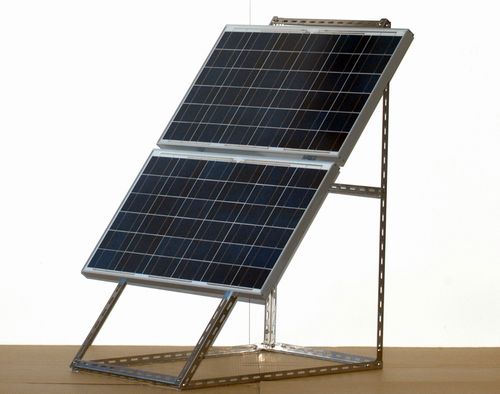I’ve always been a big fan of solar electricity. Put some panels on your roof and free electricity pours down the wires each and every sunny day. I live in Southern California where the sun is bright, yet the electricity prices are steep. A great combination to make solar economical. But, I had no idea just how economical until I started crunching some numbers.
I had quite a few reasons to not even bother looking into solar panels. One of the big barriers was the fact that I rent. I don’t own a roof to put solar panels on! As such, I’m not eligible for any government rebates. I’m certainly not philanthropic enough to install thousands of dollars on someone else’s property. Besides, my landlord would probably nix the idea anyway, citing a perceived bad aesthetic in our prestigious San Marino neighborhood. I don’t have the $12K for a large system to cover our electrical needs, either.
 But, I decided to look into things anyway. Maybe there’s a way that I can put up a smaller modular system without breaking the bank. Maybe I could mount it on a stand-alone fixture in the backyard and avoid the roof and the landlord altogether. But, how much will it cost, and what will be my return on investment?
But, I decided to look into things anyway. Maybe there’s a way that I can put up a smaller modular system without breaking the bank. Maybe I could mount it on a stand-alone fixture in the backyard and avoid the roof and the landlord altogether. But, how much will it cost, and what will be my return on investment?
First let’s take a look at what we’re paying for electricity right now. We’re on a time of use plan with Southern California Edison. Each month we always cross the tier 1 threshold for our house, and pay expensive fees for tier 2 electricity. During the winter, electricity during peak hours costs us 26¢/kWh. But, during the summer season we pay a whopping 54¢/kWh between the hours of 9am to 6pm on weekdays. We try to cut back our usage as much as we can during this part of the day, but we can’t do too much about refrigerators and the like. Luckily those expensive hours of the day are exactly the times that the solar panels would be operating.
So, during the summer pay season (March – October?) our solar panels will be offsetting 54¢/kWh. That means they’ll be able to pay for themselves relatively faster. Using a rule of thumb of $4/Watt, the solar panels will pay for themselves in less than 2000 hours of full sun. Not bad at all. After that it will be generating money, for the rest of their lifetime. Electricity isn’t likely getting any cheaper, so I’m sure these panels will only get more lucrative.
I’m a firm believer that green solutions can be better for the wallet as well as the planet. Solar panels are a great example of that. These panels will pay for themselves in about 7-8 years. Without any tax rebates, they are delivering a 12-15% return on investment. That’s a great investment in my book.
In the next post, I’ll detail some of the actual equipment that I’m looking into. I’ve got to be realistic about size, placement, and how I’m going to safely wire things up.